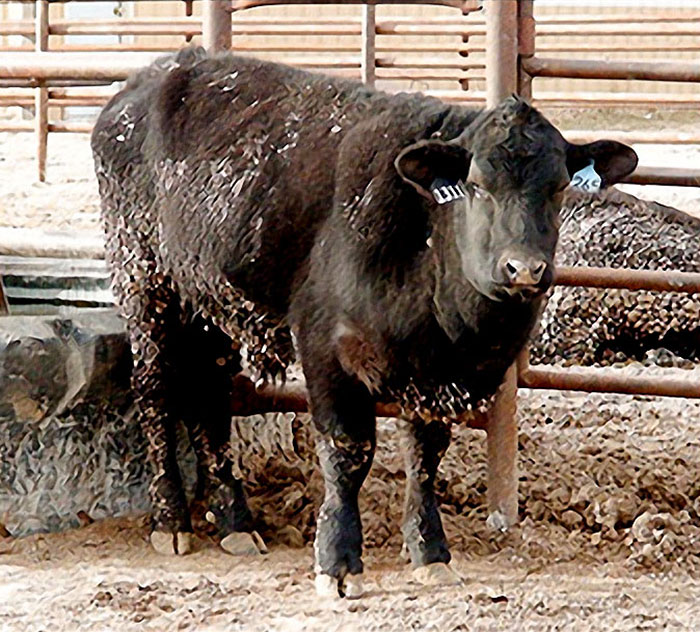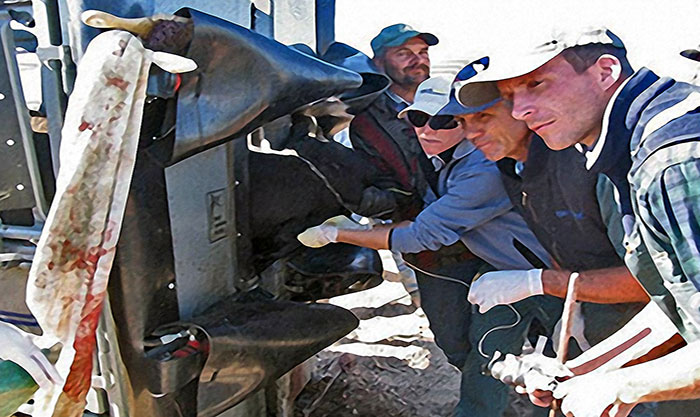Brisket Disease Research: Not Just a High-altitude Disease
Researchers are finding genetic component for pulmonary artery hypertension.
March 22, 2016

For many years, cattle producers have noticed that some cattle at high elevations suffer pulmonary artery hypertension, which leads to congestive heart failure. What many producers don’t realize, however, is that this condition can also affect cattle at lower elevations, especially feedlot animals near finish weight, and that there may be a genetic component.
This condition has been called by many names, including brisket disease, big brisket, mountain sickness or high-mountain disease. Affected animals are usually lethargic and develop edema (swelling) in the neck and brisket, due to high blood pressure forcing fluid out of the vessels into surrounding tissues. Swelling may spread up the neck or under the belly. Unless the condition is reversed, the animal dies. Sometimes you don’t see outward signs; you just find the animal dead from heart failure.
Susceptible cattle living at elevations above 5,000 feet (ft.) are at risk, and incidence of brisket disease increases at higher elevations. In the thinner air of high elevations, low oxygen availability triggers the problem. Susceptibility seems to be inherited. Affected animals often have problems early in life if they live at a high elevation, or develop the problem if brought to high elevation from lower altitudes.
Tim Holt, veterinarian with Colorado State University (CSU), has been studying brisket disease for more than 35 years and has tested cattle at elevations from sea level to 15,000 ft. He uses a test developed in humans for measuring pulmonary artery pressure (PAP). The PAP test determines which animals are most at risk for brisket disease.

Animals that are affected by brisket disease are usually lethargic and develop edema (swelling) in the neck and brisket, due to high blood pressure forcing fluid out of the vessels into surrounding tissues. Swelling may spread up the neck or under the belly. Unless the condition is reversed, the animal dies. [Photo courtesy of Joe Neary.]
The PAP test measures that pressure. There are several reasons why an animal may develop this problem, but Holt says a big reason could be genetic susceptibility. The PAP test measures pressure in the lung and blood-flow resistance, making it possible to predict an animal’s welfare at high altitudes, but to be accurate, the test needs to be performed at elevations above 6,000 ft.
The problem sometimes appears in feedlot cattle, even at low elevations, as they get heavier and closer to finishing weight, because the heart must work harder. They often die of right heart disease. Research is currently being conducted in feedlot cattle at lower elevation, because these cattle can have the same clinical appearance.

Joe Neary, Tim Holt and crew prepare to do a PAP test. The PAP test measures pressure in the lung and blood-flow resistance, making it possible to predict an animal’s welfare at high altitudes, but to be accurate, the test needs to be performed at elevations above 6,000 ft. [Photo courtesy of Joe Neary.]
Greta Kafsur, a veterinarian and doctoral student in the CSU Department of Microbiology, Immunology and Pathology, is studying the heart and lungs of these fat cattle. It is a challenge to unravel the condition and possible causes, such as hypoxia, metabolic overload and bovine respiratory disease. Milt Thomas, also with CSU, is part of a team of researchers looking at genetic factors and genomics. See the upcoming May 2016 issue of the Angus Journal for insights from their research.
Editor’s Note: Heather Smith Thomas is a freelancer and cattlewoman from Salmon, Idaho. [Lead photo by Shauna Hermel.]
Angus Beef Bulletin EXTRA, Vol. 9, No. 3
Topics: Health , Management
Publication: Angus Beef Bulletin


